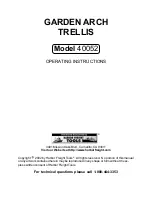
38
If possible, first disconnect all loads from the network on which you test the RCD. This prevents interference with the test by any
leakage currents due to these loads.
If you have a current clamp, you can measure the leakage current (see §3.10) at the RCD and so make allowance for it during
the test.
30 mA
Choice of the nominal current of the residual current device I
D
N
: VAR. (variable: the user programs a value be-
tween 6 and 999 mA), 10 mA, 30 mA, 100 mA, 300 mA, 500 mA, 650 mA, or 1000 mA.
Choice of type of residual current device: STD (standard),
S
or
G
(the S type is tested with a current of 2 I
D
N
as default).
Choice of the form of the test signal:
Before starting the measurement, you can configure it by modifying the parameters displayed:
signal that starts with a positive alternation,
signal that starts with a negative alternation,
signal containing only positive alternations,
signal containing only negative alternations.
Rb
R
N
R
L
L
N
30 mA
300 mA
Ra
PE
Particular case:
To test a residual current device located down-
stream of another residual current device having a
smaller nominal current, you must use the measur-
ing cable terminated by 3 leads and make the con-
nections shown opposite (upstream-downstream
method).
Rb
R
N
R
L
L
N
Ra
> 25 m
PE
To make a more accurate measurement of the fault
voltage, plant the auxiliary rod at a distance of more
than 25 metres from the earth electrode and connect it
to the
(R
A
S
EL
) terminal of the device. The
symbol
is then displayed.
RCD
Rb
R
N
R
L
L
N
PE
Ra
RCD
RCD
RCD
red
green
blue
Summary of Contents for C.A 6116
Page 1: ...C A6116 Installation TESTER E N G L I S H User s manual...
Page 95: ...95...
















































